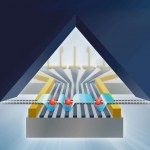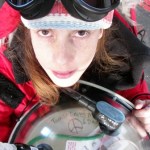Particle detectors
Here are some more unsung heroes of research: scanners (the human kind). In the 1950s, Donald Glaser invented the bubble chamber – a way to track infinitesimally small quantum particles as they winked in and out of existence. The idea – which may or may not have been tested in beer – was to create a large chamber of liquid under pressure next to a particle accelerator. As the beams hit their target, producing sprays of new types of short-lived particles, these energetic particles would leave tracks of bubbles in the liquid (usually hydrogen). Everything was caught on arrays of special high-…
Of the four new articles online on our website, three happen, purely by accident, to be on physics research. The three are very different, and yet each is an illustration of the ways that basic physics research changes our world – in small and large, practical and enlightening ways. And each is situated at a different intersection between the technological and the theoretical – a technological breakthrough that resulted from a successful attempt to provide proof for a theoretical construct, new inventions based on elementary physical principles of light, and a theory substantiated through a…
Not many Israelis make it all the way to the South Pole. (In fact, very few people go there, at all. Not only is it really, really cold, it is extremely difficult and expensive to transport people, gear and necessities to this remote and inhospitable corner of the earth.) So when we learned that Dr. Hagar Landsman, who recently joined the Weizmann Institute’s Physics Faculty, has a part-time gig at the IceCube neutrino detector array, we simply had to write about her. Landsman’s specialty is particle detectors, and IceCube has 5,000 of them buried under several kilometers of ice. In her brief…


